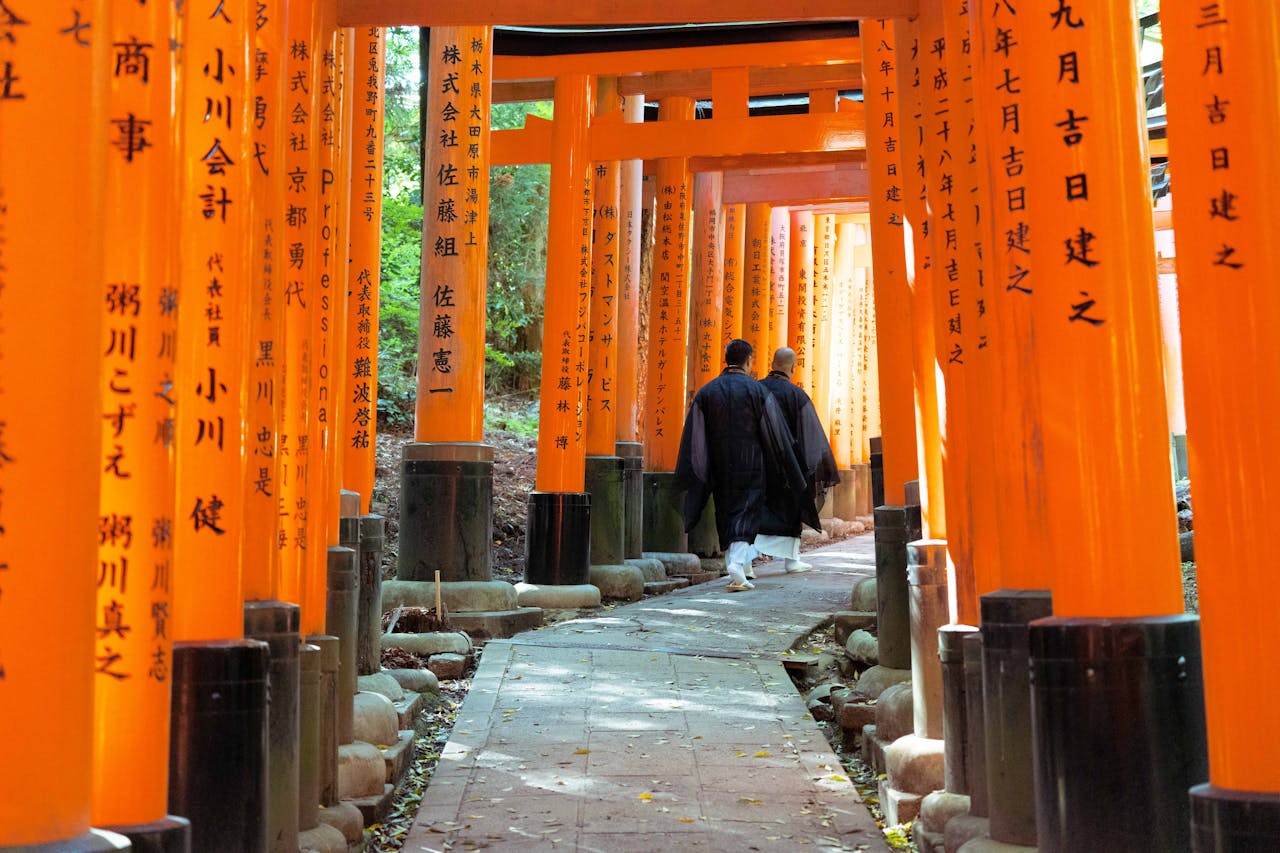Visiting Fushimi Inari Shrine is like stepping into a magical world that combines spiritual significance with natural beauty. Known for its towering vermilion torii gates and serene atmosphere, this iconic site is a must-see on any Kyoto itinerary. Whether you’re there for a quick stroll or planning to hike the entire mountain, here’s everything you can expect when exploring Fushimi Inari Shrine.
The Majestic Torii Gate Pathways
Fushimi Inari is famous for its stunning network of over 10,000 vibrant vermilion torii gates that create a mesmerizing path up the mountainside. As you walk through the endless tunnels of gates, you’ll feel a sense of otherworldliness, making this one of the most photogenic spots in Kyoto. The primary path is usually busy, but if you venture onto the side trails, you’ll find quieter areas where you can enjoy the peaceful ambiance with fewer tourists.
Hidden Shrines and Fox Statues
Along the trails, you'll encounter numerous small shrines, each offering a quiet spot for reflection. The fox statues at Fushimi Inari are particularly significant, as they are regarded as the messengers of Inari, the Shinto god of rice, agriculture, and prosperity. These fox statues, with their trademark keys in their mouths, can be seen at every turn, adding to the shrine's sacred atmosphere.
Seasonal Wonders at Fushimi Inari Shrine
The beauty of Fushimi Inari Shrine changes with the seasons, making it a wonderful destination year-round.
Spring: The base of the shrine comes alive with cherry blossoms, adding a touch of delicate pink against the vibrant red gates. It’s a photographer’s paradise during this season.
Autumn: As the weather cools, the shrine’s trails are adorned with brilliant red, orange, and gold foliage, offering a warm, inviting atmosphere perfect for exploration and photography.
Early Morning or Evening Visits: For those seeking a tranquil experience, visiting early in the morning or later in the evening allows you to experience the shrine bathed in soft, golden light. Plus, fewer crowds mean a more intimate, peaceful visit.
Tips for the Best Experience at Fushimi Inari
Arrive Early: The shrine can get crowded, especially during peak tourist hours. Arriving early in the morning or later in the evening will allow you to avoid the rush and capture the best photos.
Comfortable Footwear: Exploring Fushimi Inari involves walking up a mountain trail, which can take 2-3 hours if you plan to do the full hike. Wear comfortable shoes to ensure a pleasant experience.
Bring Water & Snacks: The trails can get long, and it’s important to stay hydrated, especially during the warmer months. Bring a bottle of water and some light snacks if you plan to explore the entire mountain.
Capture the Moment: Don’t forget your camera! The iconic torii gates, hidden shrines, and scenic views make Fushimi Inari a photographer’s dream. Be sure to take time to capture the unique beauty of this sacred place.
Whether you’re a first-time visitor or a seasoned traveler, Fushimi Inari Shrine offers an unforgettable experience that blends nature, spirituality, and breathtaking scenery. With its rich history, stunning landscapes, and serene atmosphere, it's no wonder this is one of Kyoto’s top attractions.


















